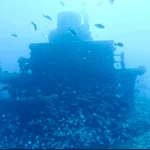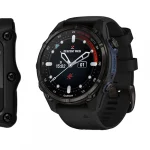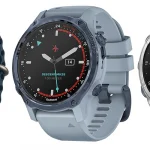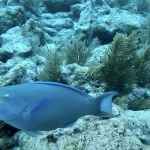Why Hydration Matters More Than You Think
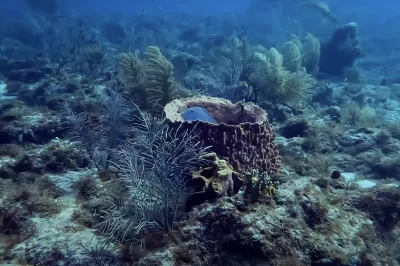
Table of Contents
- Why Hydration Matters More Than You Think
- Hydration Myths: Separating Fact from Fiction
- Dive Deeper: Electrolytes and Their Role in Safety
- Common Hydration Mistakes Diver Make—and How to Avoid Them
- The Future of Divers’ Hydration: What Trends Are Emerging?
- Electrolyte Drinks vs. Plain Water: What’s the Difference for Divers?
- Realistic Hydration Plans for Your Diving Day
- Scuba Diving and Hydration: Data-Driven Insights Into Optimal Practices
Introduction
This blog post explores the importance of staying hydrated with electrolyte drinks for scuba divers visiting Key Largo. Proper hydration is crucial not only for safety underwater but also for maximising enjoyment and efficiency during dives. By providing electrolyte drinks on our boats, we aim to ensure divers have a safe and pleasant experience.
Why Hydration Matters More Than You Think
Common Misconceptions About Hydration and Scuba Diving
When diving in the stunning waters of Key Largo, staying properly hydrated is crucial for ensuring a safe and enjoyable experience. However, some common myths can mislead divers about hydration needs and scuba diving practices.
Hydration Myths
- Myth 1: Hydration is only important during exercise.
The reality is that hydration is vital at all times. Daily water loss occurs through metabolism, breathing, and perspiration, requiring consistent fluid intake regardless of activity level.
- Myth 2: All beverages hydrate equally.
While plain water is essential, not all drinks provide adequate hydration. Electrolyte-rich drinks, like those offered on our boats, effectively replenish lost salts and minerals, enhancing overall hydration beyond what regular water can offer.
- Myth 3: You should only drink when you feel thirsty.
This is a common misconception that can lead to dehydration. Thirst is often a late indicator of dehydration, so proactive hydration is crucial, especially before and after dives.
- Myth 4: You don’t need special drinks to stay hydrated.
Some beverages, such as sodas or juices, lack the necessary balance of electrolytes. Specialised drinks formulated for hydration can significantly support your body’s needs during intense activities like scuba diving.
Scuba Diving Misconceptions
Just as hydration myths can confuse divers, misconceptions about scuba diving also abound. Here are a few key truths:
- Myth 1: Divers breathe pure oxygen.
In fact, scuba tanks are filled with air composed of approximately 21% oxygen and 78% nitrogen. Pure oxygen is used sparingly, primarily in emergency situations.
- Myth 2: Women cannot dive during menstruation.
Medical professionals typically assert that diving during menstruation is safe, as proper training and equipment can mitigate any associated risks.
- Myth 3: You will run out of air unexpectedly.
Effective air management skills enable divers to monitor their air levels closely, utilising pressure gauges and the “rule of thirds” to minimise risks.
Hydration Myths: Separating Fact from Fiction
Electrolytes play a critical role in scuba diving safety and performance by regulating fluid balance, mitigating physiological risks, and optimising physical endurance. Here’s an analysis of their impacts:
Safety Implications
- Reducing Decompression Sickness (DCS) Risk
Dehydration thickens blood, slowing nitrogen off-gassing and increasing DCS vulnerability even when adhering to dive tables. Electrolyte-rich fluids help maintain proper hydration levels, reducing this risk. A study found that pre-hydration with 30% of daily water intake significantly decreased post-dive bubble formation, supporting the role of electrolyte balance in DCS prevention.
- Counteracting Physiological Stress
Dehydration exacerbates muscle cramps, fatigue, and elevated heart rate, all of which compromise diver safety. Electrolytes replenish salts lost through sweating and respiration, particularly during prolonged exposure to wetsuits or hot environments.
Performance Optimisation
- Minimising Urination Urges
Sports drinks containing electrolytes reduce urine production during dives, decreasing interruptions caused by the need to relieve oneself. This is particularly valuable during deep or extended dives where fluid loss is greater.
- Sustaining Endurance
Electrolyte imbalances can lead to fatigue and reduced stamina, impairing a diver’s ability to respond to emergencies. Proper electrolyte intake ensures optimal muscle and nerve function, critical for tasks requiring precision.
Advanced Protocols for Deep or Saturation Diving
For saturation divers working at extreme depths, electrolyte management requires specialised strategies:
- Continuous Monitoring: Real-time tracking of electrolyte levels to prevent imbalances caused by hyperbaric exposure.
- Supplementation Protocols: Tailored intake schedules aligned with dive duration and workload to maintain homeostasis.
- Chronobiological Alignments: Adjusting electrolyte intake based on circadian rhythms to optimise absorption and safety.
These protocols highlight the evolving understanding of electrolyte dynamics in high-pressure environments, where even minor imbalances can trigger serious health issues. In summary, electrolytes are essential for maintaining hydration, reducing DCS risk, and ensuring physical resilience during scuba diving. Advanced operational environments demand iterative refinements in electrolyte management to balance safety and operational demands.
Dive Deeper: Electrolytes and Their Role in Safety
Common Hydration Mistakes Divers Make—and How to Avoid Them
Scuba diving necessitates optimal hydration for maximising both safety and performance. However, many divers inadvertently make hydration mistakes that can jeopardise their diving experience. Understanding these common errors is essential for ensuring an enjoyable and safe diving adventure in Key Largo.
- Overhydration (Hyponatraemia Risk): Consuming excessive amounts of water or fluids can lead to hyponatraemia, a condition where sodium levels in the blood become dangerously low. This often occurs when divers, anxious about dehydration, overcompensate by drinking too much just before or after their dives. To avoid this, it’s best to hydrate steadily leading up to your dive, rather than consuming large quantities all at once.
- Underhydration: Many divers do not hydrate adequately, particularly when diving in cold water where thirst cues are diminished. This can lead to a host of issues, including reduced focus and physical performance. Divers should aim to drink water frequently throughout the day, even if they do not feel thirsty. A good guideline is to drink regularly before, during, and after diving sessions.
- Neglecting Electrolytes: Electrolyte loss through sweat, especially on hot days or strenuous dives, can lead to fatigue and cramps. Many divers overlook the importance of replenishing sodium and potassium stores. Incorporating electrolyte-rich drinks can enhance hydration and recovery during multi-dive days.
- Carb-Heavy Hydration: Some divers mistakenly rely on sugary beverages to stave off dehydration. These drinks can cause spikes in blood sugar followed by crashes, negatively affecting stamina and energy levels during dives. Opt for balanced hydration solutions that include electrolytes rather than solely sugary drinks.
- Post-Dive Celebrations: After a day of diving, it’s tempting to indulge in celebratory drinks, often containing alcohol or high sugar content. This approach can exacerbate dehydration and imbalance electrolytes, compounding the effects of dive-induced fluid loss. Staying hydrated with water or an electrolyte beverage post-dive is the better choice.
Ultimately, divers need to develop a keen awareness of their hydration practices. Monitoring urine colour can help determine hydration levels, with pale yellow indicating proper hydration. Additionally, sipping water consistently 2–3 hours prior to your dive while incorporating an electrolyte drink can enhance not only safety but also overall diving enjoyment.
Common Hydration Mistakes Divers Make—and How to Avoid Them
Emerging Trends in Divers’ Hydration
Scuba diving enthusiasts are increasingly recognising the crucial role of hydration, not just as a precaution, but as an essential component of safety and performance. Recent developments in hydration practices emphasise precision fluid management and in-water accessibility, guiding divers towards better health and enhanced enjoyment of their underwater experiences.
1. Personalised Pre-Dive Hydration Protocols
Modern hydration strategies promote consuming about 0.69 litres of water two hours prior to diving. This targeted approach is linked to minimising bubble formation and enhancing decompression safety. By maintaining optimal hydration, divers can improve blood circulation and gas exchange, which is essential during the ascent phase. It’s crucial for divers to incorporate this timing into their dive preparations to prevent issues related to dehydration.
2. In-Water Hydration Systems
For longer dives, especially during deep explorations or technical dives, the use of portable water containers and hydration packs is becoming increasingly popular. This practice addresses the challenges of fluid loss due to sweat and immersion diuresis. Having accessible hydration during dives ensures that divers can maintain fluid levels without interrupting their experience, which is particularly vital during lengthy decompression stops.
3. Hydration-Temperature Synergy
There is a growing emphasis on thermohydration management, recognising that pre-dive activities like sauna use can impact hydration levels. Proper temperature regulation aids in preventing vasoconstriction, which can lead to ineffective gas offloading during dives. Divers who manage both hydration and body temperature effectively can significantly reduce their risk of decompression sickness.
4. Shift from Electrolyte Drinks
The trend is moving away from reliance on isotonic drinks for hydration, as most diving activities do not lead to significant electrolyte loss. In many cases, plain water has become the recommended choice for divers, focusing on hydration that aligns with their specific needs rather than following broad industry norms.
5. Gear-Light Hydration Solutions
With a commitment to travelling lighter, divers are opting for slimmer water bottles and hydration bladders that do not add unnecessary bulk to their gear. This trend allows divers to focus on efficiency and convenience without sacrificing their hydration needs.
Key Considerations for Divers:
- During long dives (over three hours), aim for at least 500 ml of fluid intake per hour.
- Focus on hydration to maintain viable blood flow for optimal inert gas offloading.
- Be cautious of overhydration; find a balance that avoids frequent urinary urgency while diving.
These emerging hydration trends reflect an integration of physiological research with practical diving requirements, aligning safety and efficiency for divers in Key Largo.
Dive Computers
- Diving Computers for Female Divers
- Wreck Diving Computers
- Beginner Diving Computers
- Low-Light Diving Computers
- Technical Diving Computers
- Freediving Computers
- Underwater Photography Diving Computers
- Cold-Water Diving Computers
- Travel-Friendly Diving Computers
- Multi-sport Diving Computers
- Budget-Friendly Diving Computers
- Advanced Recreational Diving Computers
- Smartwatch-Compatible Diving Computers
- Child-Friendly Diving Computers
- Military or Professional Diving Computers
The Future of Divers’ Hydration: What Trends Are Emerging?
Key Considerations for Divers
When it comes to hydration for scuba diving, understanding the differences between electrolyte drinks and plain water is crucial for maintaining optimal performance and safety underwater. Divers should consider several key factors when choosing their hydration strategy:
- Activity Duration and Intensity: Prolonged or high-intensity dives, such as those involving repetitive descents and heavy exertion, can lead to significant sweat and electrolyte loss. In these cases, electrolyte drinks become more beneficial as they help prevent issues like muscle cramps, fatigue, or arrhythmias. Conversely, for shorter and less intense dives, plain water is often sufficient for hydration.
- Environmental Factors: Diving in warm climates or while wearing thick dive gear can increase sweat production, necessitating the replenishment of lost electrolytes. However, in colder diving conditions, where sweat loss may be minimal, plain water can suffice.
- Electrolyte Balance: Overhydration from drinking excessive plain water can dilute sodium levels in the body, leading to hyponatraemia, a potentially dangerous condition. Insufficient electrolyte intake during intensive activities can also impair muscle and nerve function, highlighting the need for a balanced approach.
Recommendations for Divers
- Use electrolyte drinks when:
- Diving for over 60 minutes or in hot environments.
- Experiencing excessive sweating, indicated by visible salt streaks on the skin or muscle cramps.
- Pairing with electrolyte-rich snacks, such as pretzels or bananas, to avoid reliance on sugary drinks.
- Opt for plain water when:
- Engaging in short, low-intensity dives.
- Balancing fluid intake with electrolyte-rich foods before and after diving.
Alternatives and Custom Solutions
| Option | Pros | Cons |
|---|---|---|
| Commercial Sports Drinks | Convenient, rapid electrolyte and carbohydrate replenishment. | Often high in sugar and artificial additives. |
| DIY Electrolyte Mix | Cost-effective and customisable (mixing salt with fruit juice and honey). | Less practical for quick access during dives. |
| Electrolyte Tablets | Easy to add to water with various formula options. | May contain unnecessary additives. |
For personalised hydration strategies tailored to diving conditions, considering a consultation with a sports dietitian may be beneficial.
Electrolyte Drinks vs. Plain Water: What’s the Difference for Divers?
Realistic Hydration Plans for Your Diving Day
Proper hydration is crucial for scuba divers, especially during the hot and humid conditions of Key Largo. Developing a hydration plan ensures optimal performance and safety, preventing issues related to dehydration such as fatigue and poor cognitive function.
Pre-Dive Hydration Strategy
- Early Hydration Initiation: Begin hydrating at least 24–48 hours before diving. Aim for approximately 3 litres daily, increasing intake by 50% on active dive days (e.g., 4.5 litres on busy days). Monitor your urine colour; it should be pale straw, indicating proper hydration.
- Timing and Intake Method: Start consuming small amounts of fluid (about 250–500 mL every 2–3 hours), beginning 90 minutes before your dive, even before feeling thirsty. Be cautious; avoid overhydration, as it can lead to complications.
Fluid Choices
- Primary Choice: Hydrate mainly with plain water; consider adding slices of lemon or orange for a flavour boost.
- Alternatives: Fruit juices or isotonic drinks are excellent if you’re exercising before or after dives in hot climates.
- Avoid: Stay away from alcohol, caffeine (like coffee and tea), salty foods, and sugary sodas.
During and Post-Dive Management
- Nutritional Support: Include potassium-rich foods before diving, such as bananas or watercress, to help with electrolyte balance. Consuming proteins like fish or legumes the night before or after diving facilitates tissue recovery.
- Hydration Tools: Make use of a BPA-free water bottle with measurement markings to monitor your intake efficiently. A hydration pack, such as the HydraPak, with a 3-litre capacity can be beneficial for hands-free drinking during extended trips.
Post-Dive Recovery
Rehydrate immediately after surfacing to combat diuresis and fatigue. Pair your water intake with electrolyte-rich snacks to aid recovery.
Special Considerations
- For Drysuit Divers: Employ a pee valve to minimise fluid restriction before diving. Ensure hydration remains a priority despite potential logistical challenges.
- Climate Adaptations: In hotter conditions, consider supplementing with electrolyte drinks to replace lost salts effectively.
Key Recommendations
- Track Intake: Regularly assess your hydration levels using a marked water bottle.
- Protect Against Heat: Use shade to limit overheating and reduce sweating.
- Rehydrate After Dives: To avoid confusion or fatigue, drink promptly after surfacing.
Realistic Hydration Plans for Your Diving Day
Scuba Diving Hydration Strategies for Key Largo
Hydration is critical for safe and enjoyable diving in Key Largo’s marine environment. Here are actionable strategies tailored to local conditions:
Pre-Dive Preparation
- Hydrate thoroughly beforehand: Aim to drink water 1–2 hours before your dive to avoid dehydration, which can exacerbate physical exertion and saltwater exposure.
- Avoid caffeine/alcohol: These diuretics may increase fluid loss, risking fatigue during dives.
Surface Interval Management
- Bring electrolyte drinks: Saltwater exposure can deplete bodily salts. Electrolyte solutions help replenish these and rebalance fluids lost to sweating.
- Pack snacks: While some operators offer limited provisions, divers should carry nuts, dried fruit, or energy bars to maintain energy levels during breaks.
During the Dive
- Rinse mouth with water: If saltwater enters your mouth, have a sip from a water bottle during surface intervals to neutralise the taste, instead of opting for sugary sodas.
- Monitor fatigue: Dehydration can amplify exhaustion from swimming against currents. If fatigued, prioritise conservative air management and conserve energy for ascent.
Post-Dive Rehydration
- Rehydrate immediately: Key Largo’s tropical sun and exertion demand rapid fluid replacement post-dive. Aim for water or sports drinks within 30 minutes of exiting the water.
Dive Operator Considerations
- Check provisions: Some operators may lack snacks or electrolytes. Confirm what your provider supplies and supplement with personal supplies if needed.
These strategies align with local dive conditions, addressing saltwater exposure, physical exertion, and operator resource variability. Prioritise electrolyte balance and proactive fluid management to optimise safety and comfort in Key Largo’s iconic reefs and wrecks.
Scuba Diving and Hydration: Data-Driven Insights Into Optimal Practices
Importance of Hydration in Scuba Diving
Proper hydration is critical for scuba diving safety and performance. It helps prevent decompression sickness (DCS) by supporting nitrogen elimination, maintains energy levels, reduces muscle cramps, and avoids fatigue, confusion, or impaired decision-making during dives. Dehydration accelerates during diving due to dry suit air, saltwater exposure, and physical exertion.
Key Hydration Methods
- Pre-Dive Hydration: Start hydrating 24–48 hours before diving, aiming for small, frequent sips (e.g., a glass every 15–20 minutes) instead of large volumes at once.
- In-Water Strategy: Consider drinking plain water during extended dives or deep decompression stops, as practised in technical diving.
- Fluid Choices: Prioritise plain water or lightly flavoured options (e.g., lemon/orange slices). Avoid diuretics like caffeine, alcohol, or sugary sodas.
Electrolyte Drinks
While the primary recommendation is water, electrolyte drinks may help in high-sweat scenarios (e.g., hot climates, prolonged physical exertion) to balance salts and prevent cramps. However, opt for low-sugar formulas and avoid caffeine-laden options.
Key Largo Diving Tips
For dives in Key Largo, Florida, consider:
- Heat Management: Florida’s tropical climate increases sweat loss. Plan hydration breaks between dives and carry refillable bottles.
- Saltwater Mitigation: Rinse skin and equipment to minimise salt-induced dehydration. Use mineral water to replenish minerals lost through sweating.
- Dive Planning: Schedule dives with adequate rest periods to rehydrate and consume light snacks (e.g., fruits) between dives.
Note: Always consult local diving professionals for site-specific advice.
Sources
- PADI – Top 10 Scuba Diving Myths
- SharkBite Hydration – Unmasking Hydration Myths
- Waterlust – Debunking Scuba Diving Myths
- Scuba Tech Divers – Diving and Dehydration
- DIPNDIVE – Proper Hydration for Scuba Divers
- Scuba Diver Life – Dive Safety and Hydration
- PADI – Experienced Diver Mistakes
- TDI/SDI – 3 Mistakes Most Divers Make

